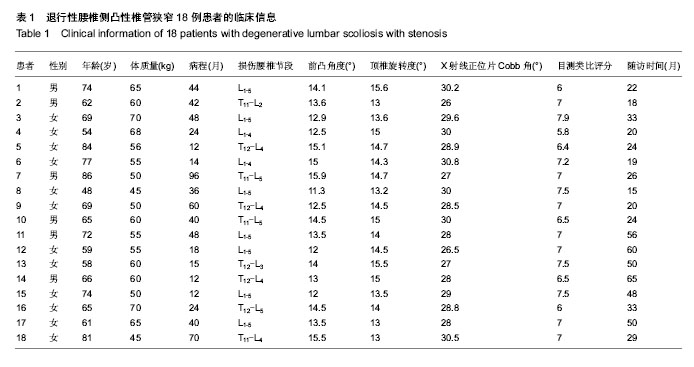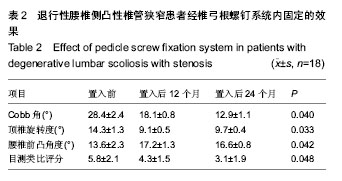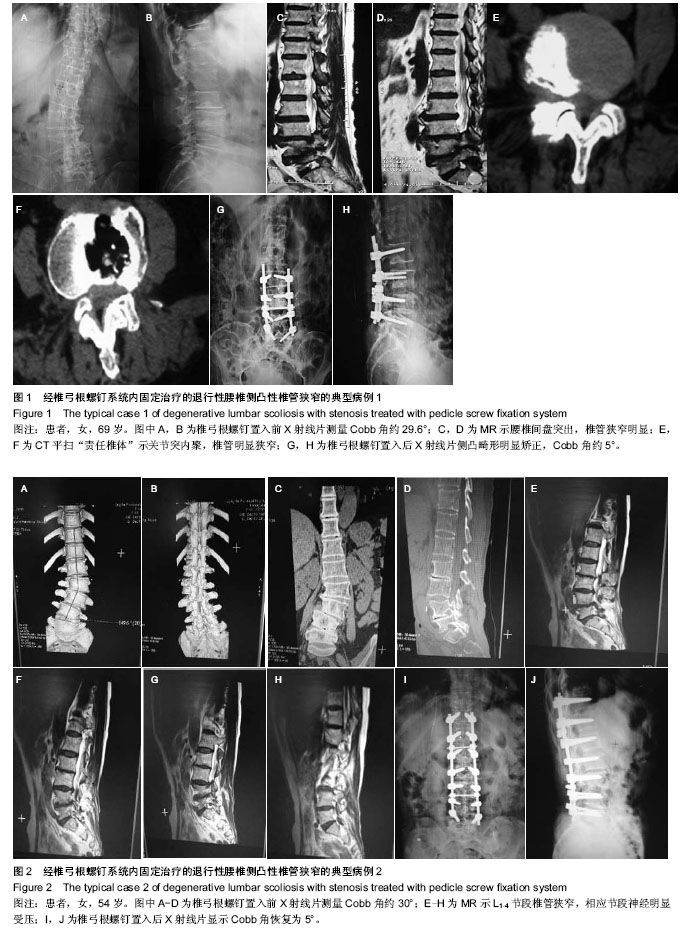中国组织工程研究 ›› 2014, Vol. 18 ›› Issue (40): 6471-6475.doi: 10.3969/j.issn.2095-4344.2014.40.013
• 脊柱植入物 spinal implant • 上一篇 下一篇
后路椎弓根螺钉置入修复退行性腰椎侧凸性椎管狭窄:矫正率及Cobb角恢复状态
王 磊,祁 荣,康全明,刘利民,陈 华,王 凯
- 青海省人民医院骨科,青海省西宁市 810007
Posterior pedicle screw system in repair of degenerative lumbar scoliosis with stenosis: correction rate and Cobb angle recovery
Wang Lei, Qi Rong, Kang Quan-ming, Liu Li-min, Chen Hua, Wang Kai
- Department of Orthopedics, Qinghai Provincial People’s Hospital, Xining 810007, Qinghai Province, China
摘要:
背景:腰椎退变导致腰椎侧凸性椎管狭窄患者单纯椎管减压难以获得长期疗效,因为单纯减压被视为一种医源性的腰椎失稳,从而加重腰椎畸形,选用腰椎后路椎弓根螺钉固定,结合减压植骨融合治疗此类患者取得了良好的疗效。
目的:评价采用后路椎弓根螺钉系统后路减压、内固定、植骨融合治疗退行性腰椎侧凸性椎管狭窄的临床疗效。
方法:对2009年2月至2012年11月手术治疗的18例退行性腰椎侧凸性椎管狭窄患者进行回顾性分析,其中男6例,女12例,年龄48-80岁,平均62.2岁,腰椎侧凸Cobb角平均为28.6°,均采用后路减压、固定、植骨融合治疗。
结果与结论:18例均得到满意随访,平均随访时间为22个月。所有患者均对治疗效果满意,生活质量提高,植入后平均矫正角度为13.7°(6.0°-28.4°),无内固定失败及感染病例。提示腰椎后路减压、内固定、植骨融合是治疗退行性腰椎侧凸性椎管狭窄的有效方法之一。
中图分类号:


